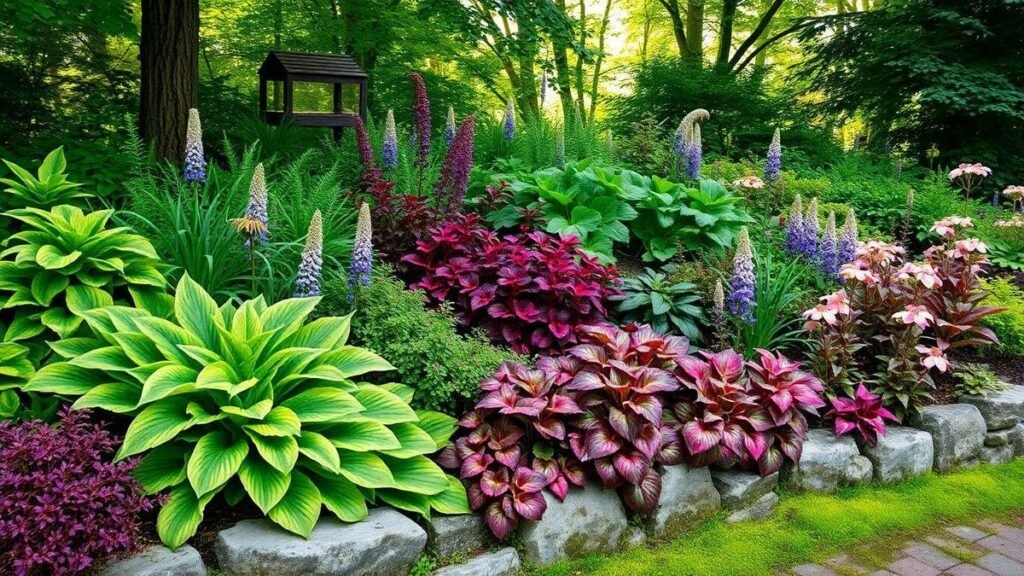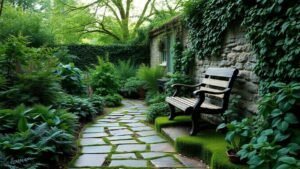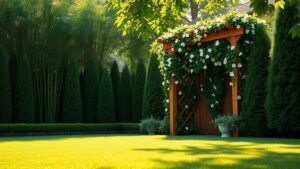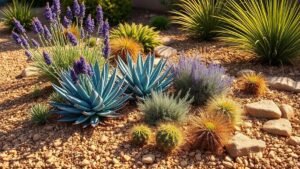Perennial Plants for vibrant flower gardens in shady areas
Perennial Plants for vibrant flower gardens in shady areas are my secret weapon for dark corners that think they’re too gloomy to bloom. Below are my best picks, a quick soil and light checklist, and simple soil and water rules so plants don’t sulk. I cover how I test moisture, my go-to mulch and drainage tips, a no-fuss watering schedule, design tricks like layering groundcovers and mixing bloom times, using evergreen perennials for structure, foliage contrast to lift shadowy spots, why I choose native and pollinator-friendly varieties, plus fixes for pests, when to divide, and a tidy yearly maintenance timeline.
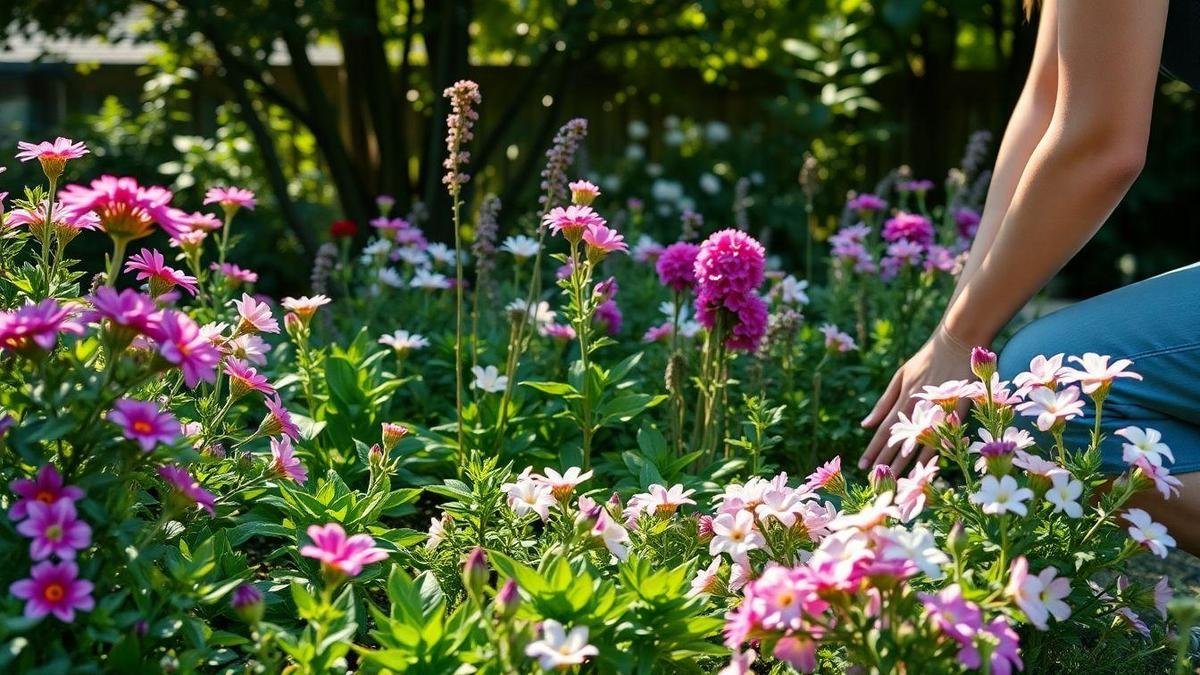
Key takeaway
- I pick shade champs like hostas, ferns, and astilbes—they thrive in low light. See my ideas for the best plants in low-light spots here.
- I mix leaf shapes and colors so the garden never looks bored.
- I keep soil moist and rich to prevent sulking — tips on preventing over- and underwatering are useful here.
- I divide crowded perennials so plants have breathing room — basic timing and technique are covered in pruning and division guides like pruning resources.
- I plant bulbs and evergreens to keep shade gardens lively year-round.
How I choose Perennial Plants for vibrant flower gardens in shady areas
I keep it short and cheeky: I want flowers, not drama. I check light, soil, moisture, and bloom time. I pick long-lived perennials that suit the specific shade I have, so the garden looks good with less sweat from me — for low-maintenance perennial picks, see best low-maintenance perennials.
Best perennials for shade I trust
Here are the plants I reach for when the sun hits the snooze button. I bold the ones I plant again and again.
| Plant | Bloom time | Color | Why I trust it |
|---|---|---|---|
| Hosta | Summer | Whites, lavenders (flowers) | Tough leaves, great texture in deep shade |
| Astilbe | Late spring–summer | Pink, red, white | Loves moist soil, feathery plumes |
| Heuchera (Coral bells) | Late spring | Pink, white | Colorful leaves all season; pollinator-friendly |
| Brunnera | Spring | Blue | Heart-shaped leaves, dainty blue blooms |
| Pulmonaria (Lungwort) | Spring | Pink to blue | Early blooms, spotted leaves brighten dark corners |
| Bleeding Heart (Dicentra) | Spring | Pink, white | Arching stems, vintage charm |
| Ferns | N/A | Green | Texture and structure where blooms are scarce |
| Tiarella (Foamflower) | Spring | White, pink | Great groundcover and spring display |
Shade-loving perennial plants I rely on for blooms
I plant mixes so something always blooms. Quick uses:
- Hosta near paths for bold leaves and summer flowers.
- Astilbe in low, moist spots for soft plumes.
- Heuchera for leaf color and contrast.
- Brunnera under trees for spring punch.
- Pulmonaria to attract early pollinators.
- Bleeding Heart for a classic, romantic look.
- Ferns for the darkest corners as a green carpet.
- Tiarella along edges and rock pockets.
If a plant sulks, I move it—placement matters; see ideas for laying out beds and small spaces in garden design and small garden planning guides.
My quick soil and light checklist
- Light: Full shade = almost no direct sun. Partial shade = a few morning hours.
- Soil texture: Loamy is best. Add compost to clay; organic matter to sandy soil — starting a compost bin helps (see compost basics).
- Moisture: Match plant to spot—dry, moist, or wet. Astilbe likes moist; hosta tolerates more. For watering balance, check how to prevent over- and underwatering.
- pH: Most prefer neutral to slightly acidic soil—test with a strip.
- Mulch: 2–3 inches of organic mulch to keep soil cool and moist. (Mulching tips and no-dig bed methods: no-dig garden.)
- Spacing: Avoid overcrowding—overcrowded shade beds get fungal issues.
- Deer check: If deer visit, choose tougher foliage like some ferns and heuchera.
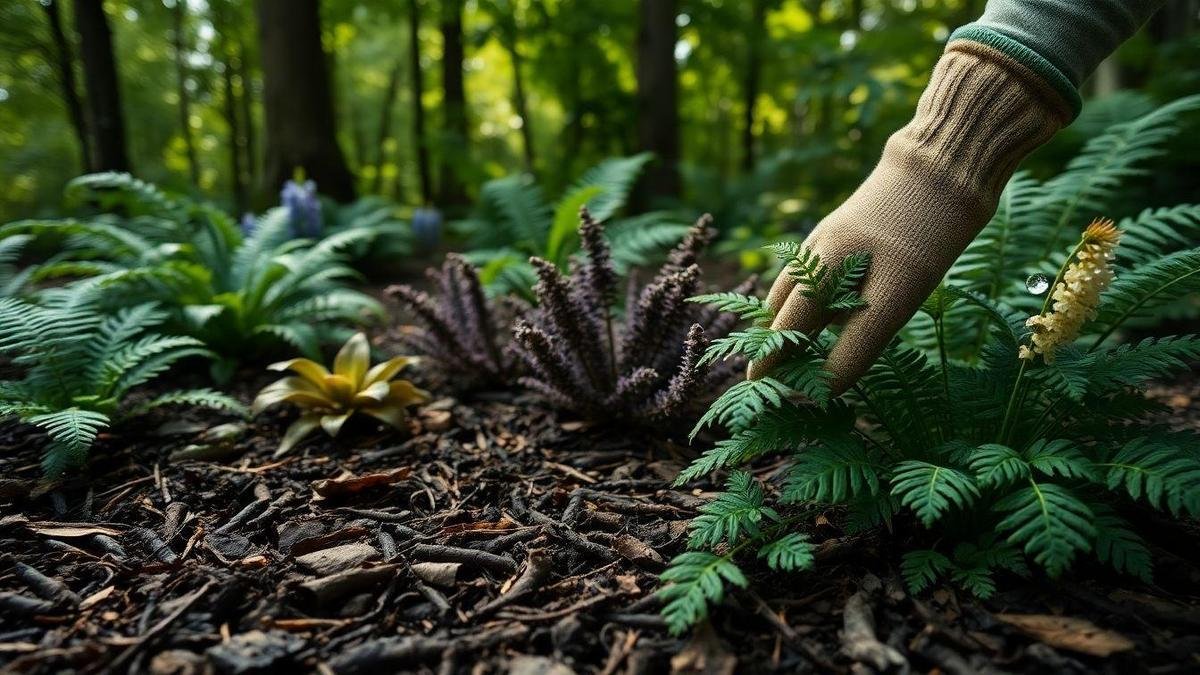
My soil and water rules for moisture-loving shade perennials
How I test soil moisture
- Finger test: if top 1–2 inches feel moist, wait; if dry, water.
- For long beds I use a cheap moisture meter—saves midnight guessing.
- Signs: limp leaves = too dry; yellow leaves soggy soil = too wet. For troubleshooting yellow leaves, see yellow-leaf fixes.
Quick guide:
| Probe depth | What I feel | Action |
|---|---|---|
| 0–1 in | Wet | Skip watering |
| 1–2 in | Moist | Check again in 3–4 days |
| 2–4 in | Dry | Water lightly |
| 4 in | Very dry | Deep soak, check drainage |
Mulch & drainage tips
- I use shredded bark or leaf compost—they breathe and feed plants. For soil amendments and organic options, see organic soil amendments.
- Keep mulch 2–3 inches; don’t pile against stems.
- Improve heavy soil with compost and a bit of grit for drainage.
- If a bed stays soggy, raise it or add a simple French drain. I once lifted a hosta bed two inches—cheered up in a week.
| Mulch type | Good for | Notes |
|---|---|---|
| Shredded bark | Long-term moisture | Refresh yearly |
| Leaf compost | Nutrients, light cover | Great in spring |
| Straw | Light cover | Avoid if it carries weed seed |
Simple watering schedule
- Water early in the morning when leaves are cool.
- Prefer deep, less frequent waterings to build strong roots — ideas for conserving water and timing are in water-saving tips.
Plan:
- Week after planting: light daily for 7–10 days.
- Establishing (first month): deep twice weekly.
- Established: deep once weekly, more during heat.
- If rain falls, skip watering—always check soil first.
| Stage | Frequency | Amount |
|---|---|---|
| New plugs | Daily light | Small cups per plant |
| First month | Twice weekly deep | Soak root zone |
| Established | Weekly deep | One thorough soak |
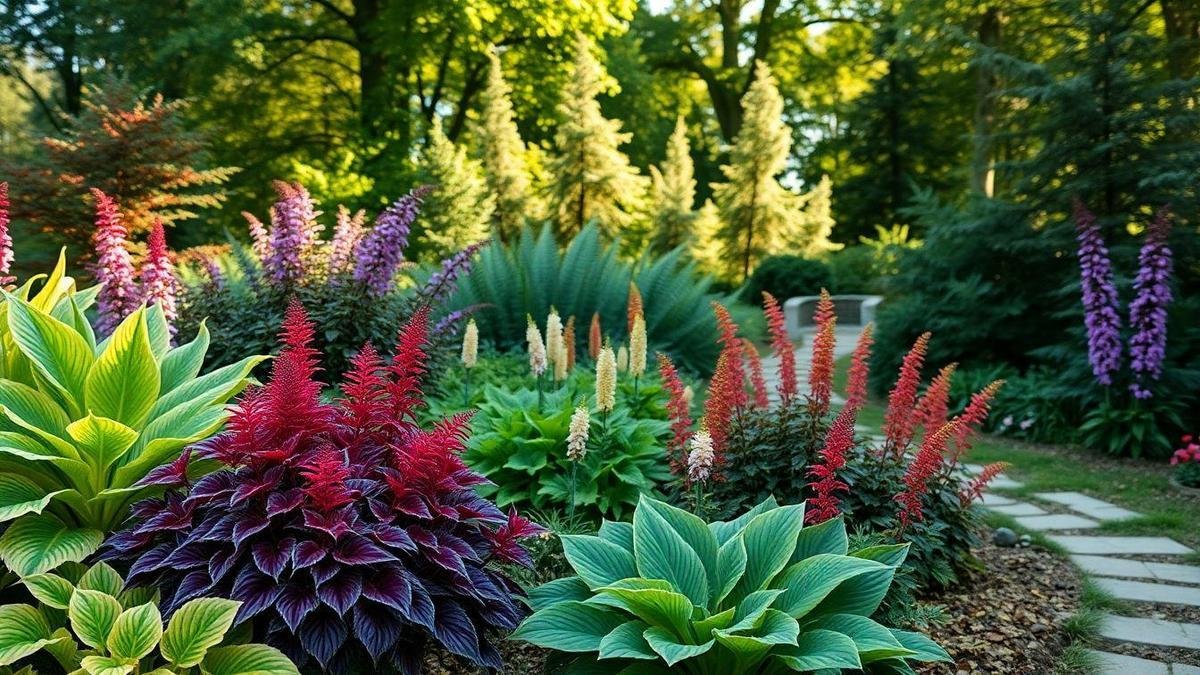
Design tricks to make Perennial Plants for vibrant flower gardens in shady areas pop
How I layer with groundcover perennials
I build low to high like a wedding cake. Groundcovers keep soil cool, stop weeds, and form a soft carpet. I like Ajuga, sweet woodruff, and lamium for shade — low-maintenance groundcover choices are featured in low-maintenance garden plants.
- Mid-height: Heuchera, Brunnera in small clumps to avoid crowding.
- Tall: Astilbe, Rodgersia, small bee balm for height and drama.
- Tip: stagger plants in triangles to break straight lines and give breathing room.
How I mix bloom times for constant color
Plan like a slow playlist — for sequencing blooms and keeping flowers going all season, see keeping flowers blooming.
- Early spring bulbs (wood anemone, Virginia bluebells) start the show.
- Late spring: pulmonaria, bleeding heart.
- Summer: astilbe, campanula.
- Fall: aster, sedum.
Plant groups of 3–5 for impact, then surround with species that bloom before or after—color that moves through the beds.
My planting map formula
| Layer | Plant types | Bloom time | Spacing |
|---|---|---|---|
| Low | Ajuga, Lamium, Sweet woodruff | Spring–summer | 6–12 in (15–30 cm) |
| Mid | Heuchera, Brunnera, Pulmonaria | Spring–early summer | 12–18 in (30–45 cm) |
| Tall | Astilbe, Rodgersia, Aster | Summer–fall | 18–24 in (45–60 cm) |
Place three low across the front, two–three mid behind, and tall at the back or center. Repeat the pattern and mark a few drip lines and shade levels.

How I use evergreen perennials for shade to keep year-round structure
Evergreen perennials act like a skeleton for the bed—shape all year, mixed with seasonal bloomers. I use Perennial Plants for vibrant flower gardens in shady areas to get color without losing structure: one steady green spine, a few color dancers, and a groundcover to hide the feet. For easy-care evergreen and perennial combos, see low-maintenance perennial picks.
Top evergreen perennials for shade I recommend
| Plant | Type | Height | Why I use it |
|---|---|---|---|
| Hellebore | Clump-forming | 10–18 in | Early flowers, leathery leaves |
| Heuchera | Foliage perennial | 8–24 in | Bright leaf color, tidy mounds |
| Bergenia | Bold-leaf | 12–18 in | Glossy leaves, early bloom |
| Epimedium | Delicate groundcover | 6–12 in | Fine foliage, soft in dim light |
| Pachysandra | Evergreen groundcover | 6–12 in | Solid cover, stays green in winter |
| Liriope | Grass-like | 12–18 in | Dark blades, late summer flowers |
I repeat plants like a chorus—repetition gives calm rhythm.
How I use foliage contrast
Dark corners are a dim stage—place one variegated or light-leafed plant where the eye falls (a spotlight). Pair bold leaves with fine ones for contrast:
- Heuchera Pachysandra = bold vs carpet.
- Bergenia Epimedium = glossy vs lacy.
- Liriope backdrop variegated Vinca front = depth and light.
Seasonal pruning notes:
- Late winter: cut frost-browned leaves on Heuchera; remove old hellebore blooms.
- Early spring: trim Liriope to 2–3 in before new shoots.
- After flowering: deadhead Bergenia and hellebores.
- Fall: remove diseased leaves from groundcovers; don’t shearslash evergreens.
Leave some shelter for birds and beneficial insects — for wildlife-friendly design ideas, see wildlife-friendly gardens.
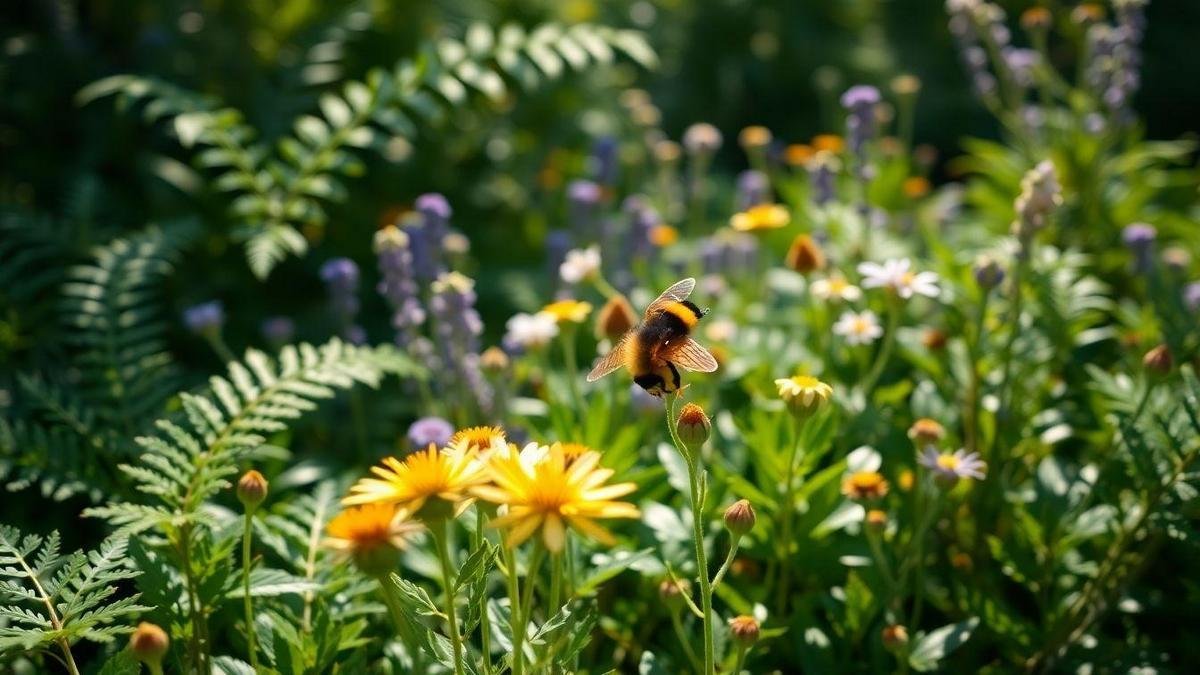
Why I choose native and pollinator-friendly shade perennials
I plant native shade perennials because they thrive with less fuss and feed local bees and butterflies better than imports. They bring seasonal color and require less maintenance — tips for creating pollinator habitat are in butterfly garden and wildlife-friendly garden guides.
Benefits:
- Low care — adapted to local weather.
- Wildlife friendly — support pollinators and birds.
- Long-lived — return year after year.
I use Perennial Plants for vibrant flower gardens in shady areas to ensure both beauty and habitat. If a plant thrives and the bees love it, it stays.
Pollinator-friendly shade perennials I plant
| Plant | Bloom time | Best for | Notes |
|---|---|---|---|
| Solomon’s seal (Polygonatum) | Spring | Shade edges, bees | Arching stems, reliable |
| Columbine (Aquilegia canadensis) | Late spring | Hummingbirds, bees | Delicate flowers, mild reseeding |
| Foamflower (Tiarella cordifolia) | Spring | Groundcover, small bees | Textured leaves, tidy clump |
| Virginia bluebells (Mertensia virginica) | Spring | Early pollinators | Quick show, likes moist shade |
| Cardinal flower (Lobelia cardinalis) | Summer | Hummingbirds | Bold red spikes, likes damp spots |
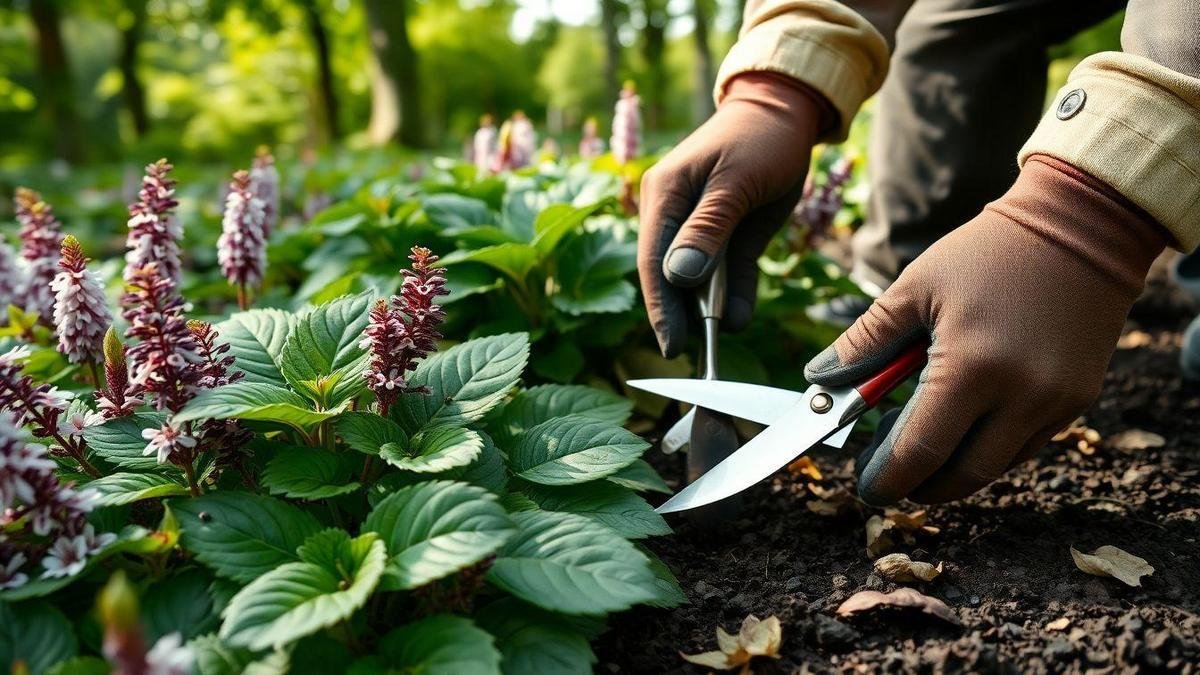
How I keep Perennial Plants for vibrant flower gardens in shady areas healthy: pests, disease, divide
I grow hostas, astilbes, heucheras, and ferns with one goal: big blooms, tidy beds, fewer headaches.
When and how I divide perennials to boost blooms
- Divide in early spring when shoots appear or early fall 6–8 weeks before frost.
- Steps: dig the clump, lift the root ball, cut into pieces with 3–5 healthy shoots, remove dead parts, replant at the same depth, press soil, water, mulch lightly.
- Tip: dividing tired clumps often restores vigor and increases blooms — see pruning and division techniques here.
Common pests and low-tox fixes
- Slugs & snails: ragged holes, slime trails. Fixes: handpick at dusk, beer traps, crushed eggshells, copper tape, diatomaceous earth.
- Aphids: curled leaves, sticky residue. Fixes: blast with water, insecticidal soap, diluted neem oil, encourage ladybugs.
- Vine weevil: notched edges (adults), collapsed plants (larvae). Fixes: handpick adults, use beneficial nematodes for grubs, avoid overwatering pots.
- Leaf spot / fungal blotch: brown/black spots. Fixes: remove affected leaves, improve airflow, water at soil level, use labeled fungal spray if needed.
- Powdery mildew: white dust. Fixes: prune for airflow, water soil only, mild spray of baking soda water.
For natural pest controls and safe options, see natural pest solutions.
I keep a small kit in the shed: pruners, gloves, insecticidal soap, neem oil, diatomaceous earth, and a jar for beer traps. Early spotting makes fixes simple and cheap.
My yearly maintenance timeline
| Season | Key tasks |
|---|---|
| Early spring | Divide if needed; clean dead foliage; light fertilize; watch for slugs |
| Late spring | Mulch; water deeply in dry spells; check for aphids |
| Summer | Deadhead, thin crowded clumps, handpick slugs at dusk |
| Early fall | Divide if crowded; remove diseased leaves; replant divisions |
| Late fall | Cut back tender stems; add winter mulch for crowns; store pots off the ground |
Stick to the timeline and the garden repays you with healthy leaves and blooms. For building low-effort beds that last, check out low-maintenance garden ideas.
Conclusion
I turned gloomy corners into a stage using Perennial Plants for vibrant flower gardens in shady areas. I choose shade champs—hostas, astilbe, heuchera—the reliable actors that want good soil and a wink of water. Simple moves deliver big payoff: test moisture with your finger (or a meter), mulch, improve drainage, follow a boring-on-purpose watering schedule, and design with three layers and staggered bloom time. Divide when clumps sulk, deal with pests early, and follow a yearly maintenance rhythm.
Low fuss, high charm—Perennial Plants for vibrant flower gardens in shady areas will transform your dim spots. For extra layout ideas and a broader set of shade-friendly plants, see our design resources at how to design a beautiful home garden.
Frequently Asked Questions
Q: Which perennials work best in deep shade?
A: Hostas, ferns, hellebore, and astilbe are top picks for deep shade — more on low-light plant choices here.
Q: What are my top color choices for shady beds?
A: White, pink, and lavender—those light colors pop in dim light.
Q: What Perennial Plants for vibrant flower gardens in shady areas should I try?
A: Try hellebores, astilbes, hardy geraniums, and foamflower—plant in clusters for big impact. Browse more low-maintenance perennial flower ideas here.
Q: When should I plant shade perennials?
A: Plant in spring or fall to let roots establish while avoiding summer heat.
Q: How do I keep slugs and weeds away without killing good bugs?
A: Use beer traps, hand-pick slugs at dusk, mulch, and pull weeds early—simple and safe. For natural pest control methods, see natural solutions.
If you want, I can create a printable planting map for a 4×6 ft shady bed using Perennial Plants for vibrant flower gardens in shady areas—tell me your zone and soil type, or review small-space plans in small garden ideas.

